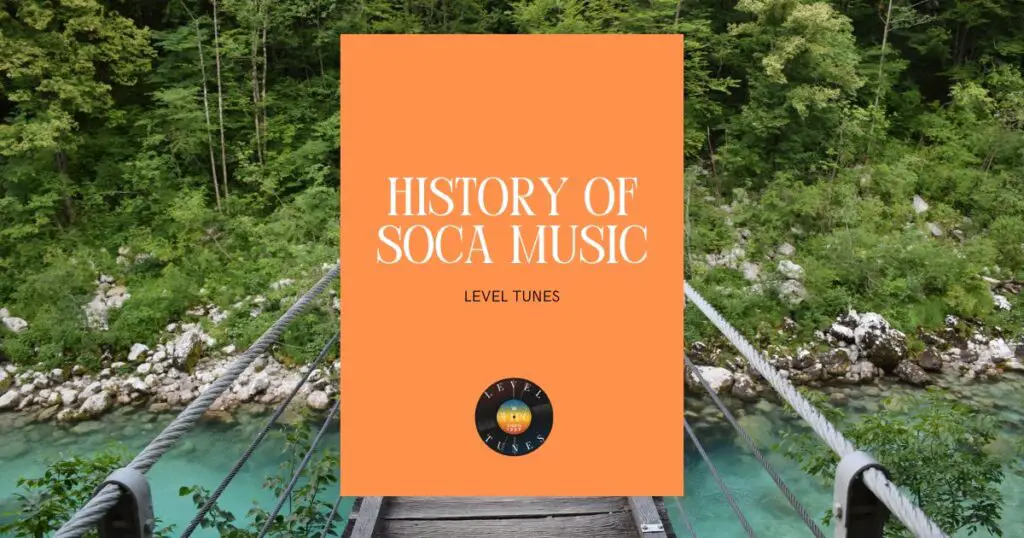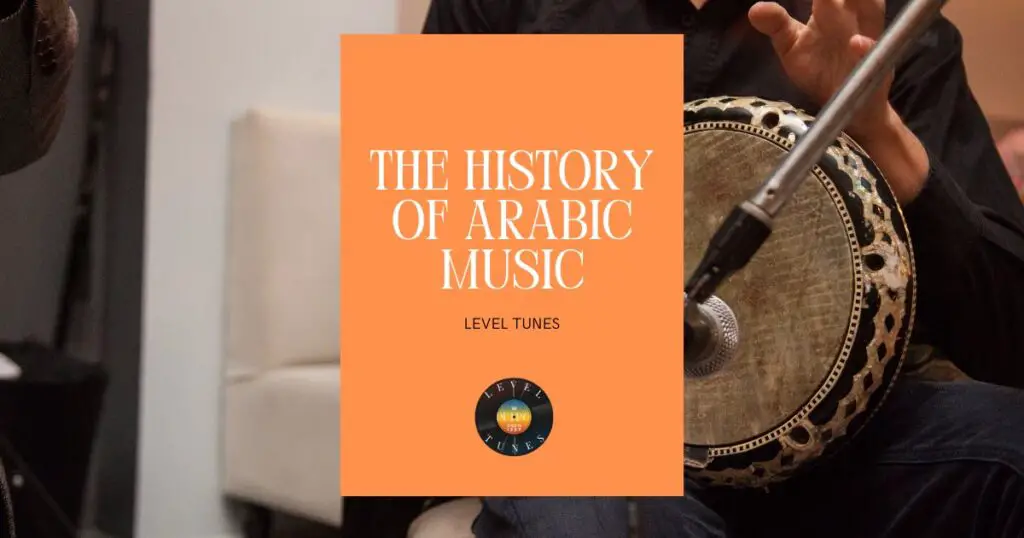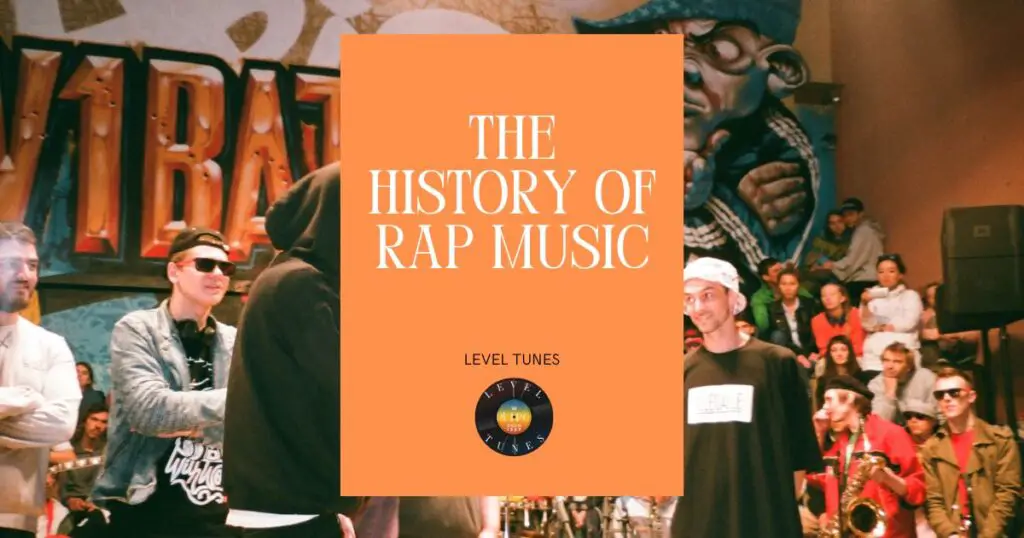The vibrant world of Soca music has been making people dance and celebrate for decades. A captivating fusion of African and East Indian rhythms, Soca encapsulates the soul of calypso while incorporating influences from other genres such as Reggae, Zouk, Latin, and Cadence.
Conceived in Trinidad and Tobago during the 1970s by Lord Shorty, this high-energy musical style continues to uplift spirits worldwide with its infectious beats played on steelpan and percussion instruments.
Join us as we explore the rich history, evolution, cultural impact, and future prospects of Soca – a genre that embodies the spirit of Carnival festivities in its very essence.
Quick Facts
- Soca music originated in Trinidad and Tobago during the 1970s as a fusion of African and East Indian rhythms with calypso, incorporating influences from other genres such as Reggae, Zouk, Latin and Cadence. Lord Shorty played a pivotal role in creating soca by fusing electronic instruments with traditional calypso music.
- Soca has evolved over time to include sub-genres like Power Soca – characterized by energetic, uptempo beats – and Groovy Soca which has slower tempos but maintains the signature high-energy beat found in traditional soca. The fusion of different genres such as reggae and Latin music continue to shape soca’s dynamic sound today.
- As tourism plays an increasingly significant role in Caribbean economies, large-scale events like Trinidad & Tobago’s carnival attract visitors from all around the world increasing international exposure for Caribbean music overall. While there are concerns about how mainstream recognition may dilute or change the essence of soca music, it is still important that we celebrate its ability to bring people together across cultures while maintaining its roots in African and East Indian traditions.
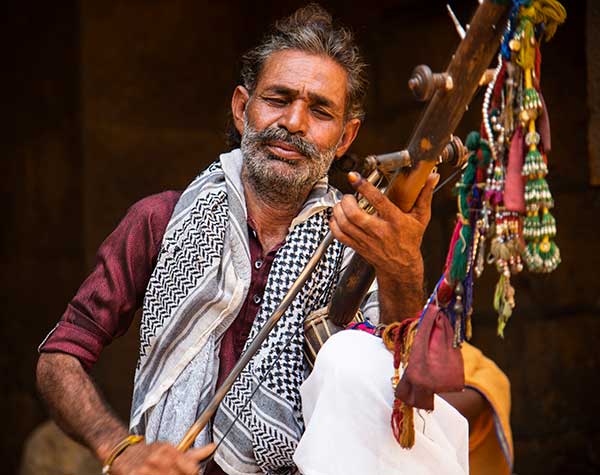
| Origin | Sub-genres | Influence |
|---|---|---|
| Trinidad and Tobago, 1970s | Power Soca, Groovy Soca | African and East Indian rhythms, Reggae, Zouk, Latin, Cadence |
The Origins Of Soca Music
The history of Soca music can be traced back to the fusion of African and East Indian rhythms in Trinidad and Tobago’s Carnival celebrations.
Definition And History Of Soca Music
The colourful and vibrant Soca music that we know and love today has a rich history rooted in the Caribbean island of Trinidad and Tobago. Emerging in the 1970s, Soca music is a captivating fusion of African rhythms, East Indian influences along with elements from Calypso, Zouk, Latin, Reggae and Cadence.
This unique blend was created by musician Garfield Blackman, more popularly known as Lord Shorty.
As an innovative artist determined to push boundaries, Lord Shorty set out on a mission to enhance traditional calypso using modern multi-track recording techniques while preserving its distinctive spirit.
What resulted was an infectious dance-inducing genre that spread throughout Trinidad’s Carnival events like wildfire—engaging locals and tourists alike and capturing their hearts through pulsating beats mixed with powerful messages about social issues or stories from everyday life experiences.
Influences From African And East Indian Rhythms
As a music lover, I’ve always been fascinated by the unique blend of sounds in Soca music. The origins of this energetic genre can be traced back to its rich influences from African and East Indian rhythms.
One key element that sets Soca apart is its fusion of calypso with Indian rhythms – a perfect representation of Caribbean diversity! Delving deeper into its history, Lord Shorty (the inventor) defined it as the “Soul of Calypso”, showcasing how important both African rhythms and East Indian beats were in shaping this infectious sound.
We can hear this influence through the heavy use of drums alongside instruments like dholak and tabla for percussion—the cornerstone for every lively Soca tune you’ll come across during carnival celebrations or dance parties.
Trinidad And Tobago’s Carnival
Trinidad and Tobago’s carnival is an explosion of vibrant colours, pulsating rhythms, and incredible energy that captivates music lovers from around the globe.
At the heart of this spirited celebration is Soca music, a genre intrinsically connected to Caribbean culture and the African diaspora.
Carnival in Trinidad and Tobago typically takes place in February or March each year (depending on the Christian calendar), culminating in two days of joyous festivities prior to Ash Wednesday.
Music plays a pivotal role during these celebrations as steel pan bands compete against one another for the title of Panorama Champion while vibrant floats featuring larger-than-life costumes fill the streets.
The infectious energy transmitted through Soca particularly comes alive during Carnival when revellers embrace dance traditions such as wining (gyrating hips) or chipping (a rhythmic stepping movement).
| Creator | Key Elements | Influence |
|---|---|---|
| Lord Shorty | Fusion of Calypso with African and East Indian rhythms, Use of electronic instruments | African and East Indian rhythms, Calypso, Zouk, Latin, Reggae, Cadence |
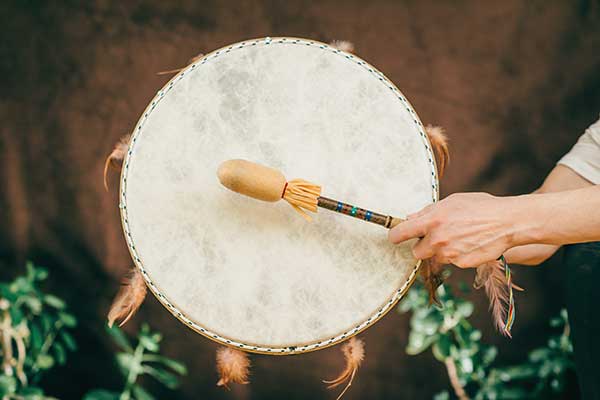
The Birth And Development Of Soca Music
Lord Shorty played a pivotal role in the birth and development of soca music, fusing African, East Indian rhythms with electronic instruments to create a new musical style that emphasized high-energy rhythms and dance beats.
Lord Shorty’s Role In Creating Soca Music
Lord Shorty, also known as the “Father of Soca,” played a significant role in creating and popularizing Soca music. He was inspired by the rhythms of African and East Indian music, which he fused with calypso to develop this unique genre.
In addition to inventing Soca, Lord Shorty’s contributions included incorporating electronic instruments into his compositions to create a modern sound that resonated with audiences in the 1970s.
His songs became anthems for Carnival celebrations, earning him widespread acclaim throughout Trinidad and Tobago.
The Incorporation Of Electronic Instruments
Electronic instruments played a significant role in the birth and development of soca music. Lord Shorty, who is considered the father of soca, is credited with creating this fusion genre by incorporating electronic instruments like synthesizers and drum machines into traditional calypso music.
The use of these electronic instruments allowed for more experimentation and creativity within the genre. It also helped to modernize the sound of Caribbean music while still paying homage to its roots.
This incorporation gave rise to sub-genres such as Power Soca, which features fast-paced beats intended for dancing at carnivals, and Groovy Soca, which has a slower tempo suited for romantic lyrics.
The Rise In Popularity In The 1970s
In the 1970s, Soca music burst onto the Trinidadian scene and quickly became a sensation. Combining traditional calypso with influences from African and East Indian rhythms, it was a sound that resonated with the people of Trinidad & Tobago during Carnival celebrations and beyond.
Lord Shorty is credited as one of the pioneers in creating Soca music, which he described as “the soul of calypso” with its fast-paced beats and infectious dance rhythms.
The incorporation of electronic instruments further fuelled its popularity among young audiences, leading to the emergence of subgenres such as Power Soca and Groovy Soca that catered to different tastes.
| Timing | Key Activities | Dance Traditions |
|---|---|---|
| February or March | Competitions among steel pan bands, Displays of vibrant floats and costumes | Wining (gyrating hips), Chipping (a rhythmic stepping movement) |
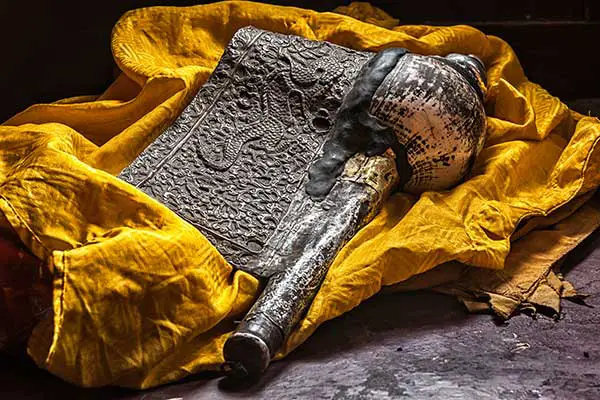
The Evolution And Fusion Of Soca Music
Soca music has undergone an evolution and fusion of different genres, including reggae, Latin music, and Afrobeat rhythms.
The Fusion Of Different Genres Such As Reggae And Latin Music
As Soca music evolved over time, it began to incorporate elements from other genres such as reggae and Latin music. The fusion of these musical styles created a unique sound that has become synonymous with Caribbean music.
One excellent example of this fusion can be seen in Power Soca – a popular sub-genre that emerged in the 1990s. Power Soca combines uptempo rhythms with electronic beats, creating an energetic sound that is perfect for dancing at carnival celebrations or parties.
Similarly, Groovy Soca adds slower tempos and smoother melodies while still maintaining the signature high-energy beat found in traditional soca.
The Emergence Of Sub-genres Such As Power Soca And Groovy Soca
As Soca music gained popularity in the 1970s, new sub-genres emerged to suit different musical styles and preferences. Power Soca is characterized by energetic, uptempo beats and often features call-and-response lyrics that encourage crowd participation.
On the other hand, Groovy Soca has a slower tempo and emphasizes melodic hooks and catchy choruses.
Power Soca hits like “Pump It Up” by Destra Garcia or “Famalay” by Machel Montano are guaranteed to get any party started while Groovy tracks such as “Hello” by Kes The Band or “Lean On Me” by Voice offer a more laid-back vibe for those who prefer to sway rather than jump up and dance.
Globalization And International Recognition Of Soca Music
As Soca music has continued to evolve and incorporate new sounds, it has gained increasing recognition on a global scale. This is thanks to the advent of technology which makes it easier for soca artists to reach wider audiences outside of the Caribbean region.
In addition to this, large-scale events such as Trinidad and Tobago’s carnival attract visitors from all around the world, allowing them to experience firsthand the vibrant energy that Soca music brings.
Overall, while there are concerns about how mainstream recognition may dilute or change the essence of soca music, it is still important that we celebrate its ability to bring people together across cultures and borders while maintaining its roots in African and East Indian traditions.
| Key Figure | Innovations | Sub-genres |
|---|---|---|
| Lord Shorty | Fusion of African and East Indian rhythms with electronic instruments, Development of high-energy rhythms and dance beats | Power Soca, Groovy Soca |
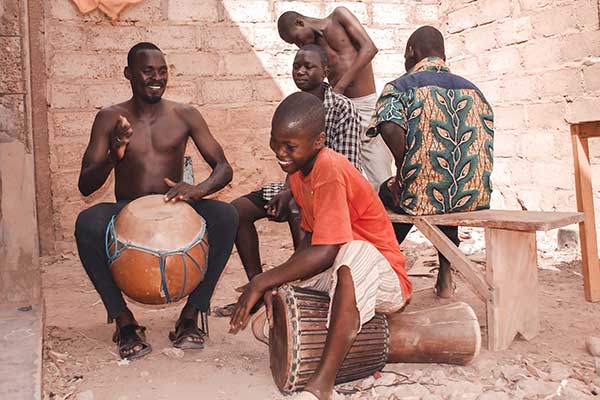
The Cultural And Social Impact Of Soca Music
Soca music has had a significant cultural impact, celebrating Caribbean identity and diversity, addressing socio-political issues, contributing to the tourism industry, and influencing fashion and dance.
Celebration Of Caribbean Identity And Diversity
As a music lover, one of the things that makes soca music so unique and special is its celebration of Caribbean identity and diversity. Soca’s roots lie in Trinidad and Tobago, a culturally diverse country with influences from Africa, East India, Europe, and beyond.
Soca music has played an important role in promoting diversity and inclusion throughout the region. Many popular soca songs feature lyrics in multiple languages – including English, Spanish, French Creole (Haitian), Portuguese creole (Cape Verdean), Patois (Jamaican) – further emphasizing its inclusive nature.
Role In Socio-political Issues
Soca music has been a powerful tool for addressing social and political issues in the Caribbean region. Many Soca artists use their platform to bring attention to important topics such as poverty, inequality, and corruption.
For instance, Superblue’s hit song “Ethel” shed light on domestic violence in Trinidad and Tobago while Machel Montano’s “Illegal” addressed immigration policies. In addition to highlighting these societal problems through lyrics, Soca has also been used as a means of activism during times of political unrest.
During the 1990 attempted coup in Trinidad and Tobago, Soca artist David Rudder released the song “Haiti”, which called for unity and resistance against government oppression.
Keywords: Caribbean music, socio-political issues, musical fusion, Calypso
Contribution To The Tourism Industry
As a music lover, it is fascinating to consider the impact that Soca music has had on cultural tourism. Trinidad and Tobago’s carnival, centered around Soca music, attracts visitors from all over the world each year.
Moreover, the rise of Soca music as a global phenomenon has also contributed significantly to cultural tourism in other regions with Caribbean communities such as Miami.
The unique blend of African and East Indian rhythms that constitute Soca’s sound makes it an exceptional competitive cultural tourism product that can be used to attract even more visitors to these regions.
The Influence Of Soca Music On Fashion And Dance
Soca music has had a major impact on fashion and dance in Trinidad and Tobago. The high-energy beats have inspired traditional Carnival costumes, with vibrant colours, feathers, and elaborate headpieces.
Soca’s influence extends beyond the Caribbean islands to other parts of the world where Carnival celebrations take place. In addition to inspiring costumes, Soca rhythms have influenced dance styles associated with Carnival, such as wining (a type of hip movement) and jumping up.
For instance, Machel Montano’s 2020 hit “Buss Head” sparked a new trend called the “Hulk” which involved flexing one’s muscles in time with the rhythm of the song.
As part of this cultural exchange that occurs through music festivals like carnival those who participate enjoy not only listening to eclectic musical blends but also learn how different cultures relate conceptually to music and dance via various expressionisms all while having lots of fun!
| Era | Catalysts | Result |
|---|---|---|
| 1970s | Lord Shorty, Incorporation of electronic instruments | Emergence of sub-genres like Power Soca and Groovy Soca |
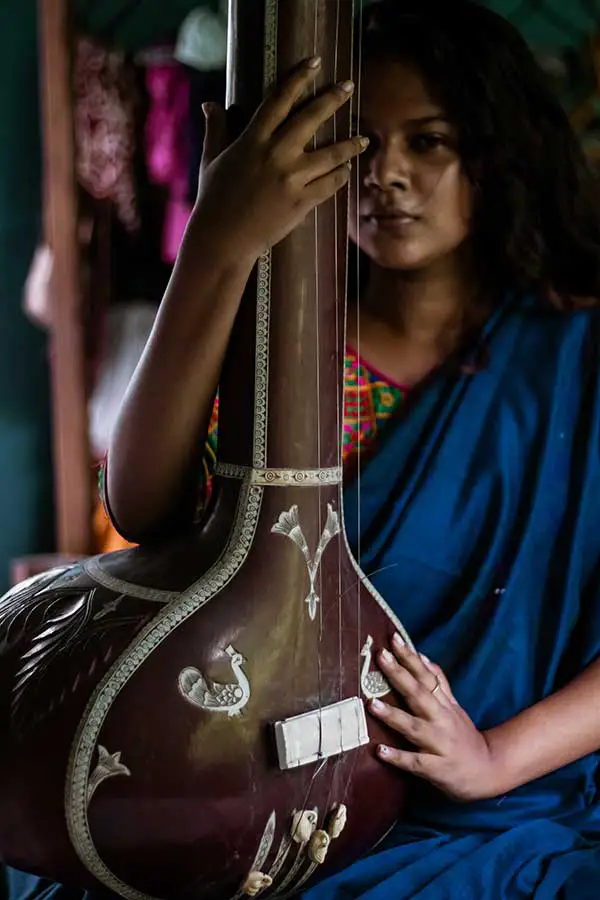
The Future Of Soca Music
The future of soca music looks bright, with new artists and trends on the horizon, while preserving the genre’s roots and traditions.
New Artists And Trends
Soca music is constantly evolving with new artists and trends emerging every year. Here are some of the latest developments to keep an eye on:
- Rising stars in Soca music include Nailah Blackman, Voice, Sekon Sta, and Patrice Roberts.
- The incorporation of EDM (Electronic Dance Music) elements into Soca music has become increasingly popular, with hits like “Famalay” by Skinny Fabulous featuring Machel Montano and Bunji Garlin blending the two genres seamlessly.
- Collaborations with artists from other genres such as dancehall, reggae, and hip hop have become more common in recent years. Examples include “Toast Remix” featuring Koffee and Shenseea and Major Lazer’s collaboration with Trinidadian artist Kes on the hit song “Palance”.
- The use of social media platforms such as Instagram and TikTok for promotion and marketing has become essential for many emerging soca artists in reaching a wider audience.
- Festivals dedicated solely to Soca music have been established outside of the Caribbean, including Miami Broward Carnival in Florida and Berlin Carnival in Germany, indicating a growing global interest in the genre.
As Soca continues to evolve with new influences and technology, it will be exciting to see how these trends shape the future of this vibrant genre.
Preservation Of Soca’s Roots And Traditions
As a lover of Soca music, it’s important to acknowledge the significance of preserving the genre’s roots and traditions. Calypsonians have played a critical role in keeping Soca alive through the years by passing down their knowledge and skills to future generations.
Furthermore, artists have gone beyond simply incorporating elements from African and East Indian rhythms into their songs; they’ve also adapted their sound to keep up with changing times without losing touch with what makes Soca unique.
The Potential For Continued Global Growth And Appreciation
As a lover of Soca music, I am thrilled to see the potential for continued global growth and appreciation of this genre. With its fusion of African and East Indian rhythms, Soca has been gaining popularity worldwide, especially at Caribbean events and on radio stations.
The emergence of new artists and trends in Soca music indicates that it’s not going anywhere soon. Furthermore, Soca music has become more accessible through streaming services like Spotify and YouTube Music.
With all these developments in mind, we can anticipate significant growth in the future as audiences continue to embrace Soca music.
| Influences | Examples |
|---|---|
| Reggae, Latin music, Afrobeat rhythms | Power Soca, Groovy Soca |
| Sub-genre | Characteristics | Example Songs |
|---|---|---|
| Power Soca | Energetic, uptempo beats, Often features call-and-response lyrics | “Pump It Up” by Destra Garcia, “Famalay” by Machel Montano |
| Groovy Soca | Slower tempo, Emphasizes melodic hooks and catchy choruses | “Hello” by Kes The Band, “Lean On Me” |
Was this response better or worse?BetterWorseSame
Regenerate response
Conclusion
In conclusion, the history of soca music is fascinating and rich with cultural influences. Originating in Trinidad and Tobago, this musical genre was created by Lord Shorty and has evolved into a global sensation that’s enjoyed by millions around the world.
Its high-energy beats are perfect for dancing and celebrating Caribbean identity and diversity. As we move forward, it’s important to preserve soca’s roots while also embracing new artists and trends that continue to shape its future.
FAQs:
What is Soca music?
Soca music originated in Trinidad and Tobago in the 1970s as a fusion of different Caribbean musical styles, such as calypso, soul, funk, and African rhythms. It features lively beats and catchy melodies that celebrate life and joy.
Who are some famous Soca artists?
Some of the most influential Soca artists include Machel Montano, Bunji Garlin, Kes The Band, Alison Hinds, Destra Garcia and Lord Kitchener. These performers have brought their unique style to audiences around the globe with energetic performances at carnivals and festivals.
How has Soca music evolved over time?
Over time, Soca has evolved to incorporate elements from other genres like hip-hop and EDM to create new sounds while maintaining its West Indian roots. Today’s musicians continue experimenting with instrumentation joining forces with producers from all over the world while still keeping up traditional customs & lyrics reflecting pivotal moments within cultural history through songwriting pieces.
Why is Soca music so important in Caribbean culture?
Soca music plays a vital role in capturing the spirit of Caribbean festivals such as Trinidad’s annual Carnival – where it was born out of calypso celebrations during slave times – highlighting themes of triumph over struggle (frequently referencing slavery), religious or even personal values throughout its existence which helped form cultural identity amongst communities both within islands themselves as well those globally who migrated due societal or political reasons over years post-emancipation era into 21st century multicultural nations too!
Thanks for reading.
TBone

